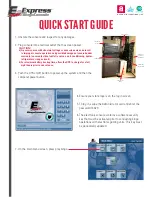
SAR infor m ation
RF expos ure inform ation (SAR)
This device m eets the EU requirem ents (2014/53/EU) on the lim itation of
expos ure of the general public to electrom agnetic fields by way of health
protection. The lim its are part of extens ive recom m endations for the
protection of the general public. Thes e recom m endations have been
developed and checked by independent s cientific organizations through
regular and thorough evaluations of s cientific s tudies . To guarantee the
s afety of all pers ons , regardles s of age and health, the lim its include a
s ignificant s afety buffer.
Before radio devices can be put in circulation, their agreem ent with
European laws or lim its m us t be confirm ed; only then m ay the CE s ym -
bol be applied.
The unit of m eas urem ent for the European Council's recom m ended lim it
for m obile devices is the "Specific Abs orption Rate" (SAR). This SAR lim it
is 2.0 W/kg, averaged over 10 g of body tis s ue. It m eets the requirem ents
of the International Com m is s ion on Non- Ionizing Radiation Protection
(ICNIRP). The m axim um SAR value is calculated at the highes t output
level in all frequency bands of the m obile device. The highes t SAR value
reported under this s tandard during product certification for us e of the
device at a dis tance of 0 cm from the body.
During us e, the actual SAR level is us ually m uch lower than the m axi-
m um value, becaus e the m obile device works in different output levels . It
only trans m its with as m uch output as is required to reach the network.
In general the following applies : The clos er you are to a bas e s tation, the
lower the trans m is s ion output of your device.
Dis pos al Ins tr uctions
Do not throw this electronic device into the tras h when dis carding. To
m inim ize pollution and ens ure utm os t protection of the global environ-
m ent, pleas e recycle. For m ore inform ation on the Was te from Electrical
and Electronics Equipm ent (WEEE) regulations , vis it www.acer -
group.com / public/Sus tainability/s us tainability01.htm






























